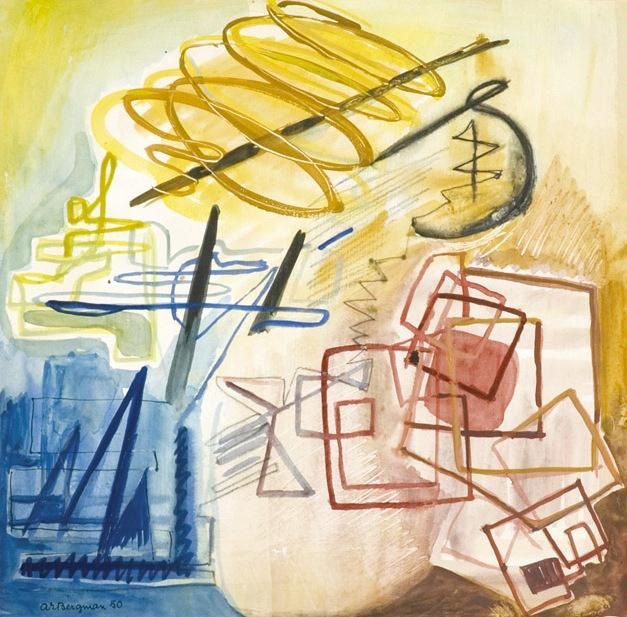Composition

Anna-Eva Bergman (1909-1987) appears today as one of the central Norwegian artists of the 20th century. However, it was not until the late 1990s that her significance became definitively established in Norwegian art history. This was most likely due to the fact that she moved to France early in her career and that she was more active on the French art scene than the Norwegian. Through her husband Hans Hartung she was introduced early to a sophisticated international art milieu, and it is particularly relevant to point to her kinship with artists such as Kandinsky, Miró, Klee, and not least Jean Arp and Yves Tanguy.
Composition from 1950 is characteristic of her formative phase and has a free and spontaneous brushwork. The imaginative and improvised style is clearly reminiscent of Kandinsky’s works from the interwar period. With a point of departure in surrealism, spontaneity and automatism, Bergman developed a personal abstract mode of expression during the late 1940s, early 1950s, and the results she arrived at formed the foundation of all of her later work as a visual artist. Anna-Eva Bergman thus reveals herself not only to be a successor of surrealism’s form; she defined a relevant and pioneering solution to what it could result in.
OWG